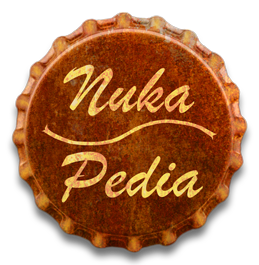| For more information on the Cold War, see Cold War on Wikipedia. |
The Cold War was a sustained, lengthy state of political and military unrest between national powers after World War II. It was termed as "cold" because there was no large-scale fighting directly between the major superpowers, although there were major regional wars, known as proxy wars.[2] The Vietnam War was one of these proxy wars that saw both anti and pro communist forces battling for supremacy over their ideological principles.[3]
In the real world, the Cold War lasted from 1947-1991. The Soviet Union collapsed in 1991 and the United States and China were able to form friendly relations with one another after President Nixon's 1972 visit to the latter. Despite the war in Vietnam being present in both realities, it is unknown how accurate the Cold War was in the Fallout world.
The tensions ended sometime before 2052, albeit temporarily.
Analysis
The main struggle of the Cold War was between two major ideologies. The nations of the western world maintained Capitalism, a system based on the principles of democracy, economic freedom for all and the rule of law. The eastern world was influenced by a new form of government- Communism, a system based upon the idea that everyone should recieve according to his or her need, with the state owning most properties and commanding its citizens. The most powerful western bloc nation was the United States of America, and the eastern bloc was led by the Soviet Union during the 20th century.
Initially, the Soviet Union was a strong supporter of Mao Zedong's communist revolutionaries. They formed a warm relationship with communist China upon its creation in 1949. However, Soviet leaders tended to be revisionists, something that Mao despised. It is possible that the Fallout world saw a rift form between the Soviet Union and China, or perhaps even a complete collapse in relations. It seems that, in the early 21st century or earlier, China emerged as a third ideology and world power on the world stage.
In the real world, China and the U.S. developed warm relations as they focused on a common enemy, the Soviet Union, which led to post-Mao China experiencing economic reforms and granting their citizens more freedom. It is likely that the exact opposite happened in the Fallout world, with the Soviet Union and the United States becoming unlikely allies. The fact that the Soviet Union, once the main rival of the United States, had a consulate in Los Angeles suggests that diplomatic relations between the two warmed in the wake of communist China. The Chinese began to viciously annex neighboring countries, suggesting that they and the Soviets also experienced border conflicts.
Influence on the Fallout world
As the Cold War never ended, the general mindset of the people still lean towards pragmatism and ruggedness, which has immense influence on the shape of the Fallout world.
Technology
The looming prospect of the Cold War halted almost all domestic demands for advancement of technology. The few exceptions are by-products from military development, such as robotics and medicine (e.g. Mr. House, protectrons, stimpaks, RadAway, and various performance-enhancing drugs). Other than that, technology mostly stayed stagnant from the 1960s.
Transportation
Land transport remained largely as it was as the culture never tuned into "sleekness" nor see the point of downsizing. As a result, most land transport had no further development beyond the 1960s. Due to the increasing cost of fuel, air and sea transport was drastically reduced close to nothing. This is evident with the few and sparse commercial/domestic aircraft and boats in both East and West Coast.
Military
The Cold War allowed military to develop with almost limitless restrictions, which explained the massive disparity between commercial and military technologies. An exception is the domestic robotics that can handle house chores and basic survivalist skills (e.g. Mr. Handy). Transport-wise, The USAF developed Vertibirds (seen throughout the games) and helicopters (as seen in Conrad in Fallout 4) for air travel. Advanced nuclear submarines were also developed.
Besides transport, the USAF developed Power armor, advanced exoskeletons that increased the operator's strength and resilience and could mount various plates to further increase its durability.
In the United States, experimental energy weapons became the main focus on weapons for the military. It is unclear what weapon was issued to the armies of the European Commonwealth, but vehicles used by the Royal Armoured Corps such as the Boudicca-78/S use small energy cells, suggesting that they also focus research on energy weapons. The Soviet Union went on to introduce the AK-112 in the early 21st century, with the model quickly being outdated and replaced by newer weapons. The Chinese also developed their own model of assault rifle, among other weapons such as the MEC Gauss minigun.
References
- ↑ The North Atlantic Treaty Organization, of which the United States was a part of, was mentioned in Fallout: Tactics on the description of the M-14 rifle.
- ↑ Fallout 3 Official Game Guide Game of the Year Edition p.310: "Originally known as "Site R," Raven Rock was designed at the beginning of the Cold War as a shelter for top military officials. It has served as the base of operations for the Enclave since the government's remaining forces retreated there. This is only accessible during Main Quest: The American Dream; it is otherwise impenetrable. The following section reflects the order you would visit each interior location."
- ↑ Fallout Tactics intro#Intro audio cues
